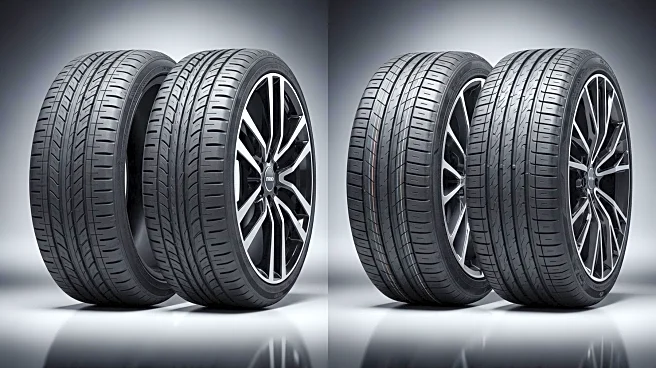What's Happening?
A viral TikTok video has highlighted a growing concern among Toyota Camry owners regarding tire theft. The video, posted by a user named Jordan, shows her rushing to check her car after hearing reports that 2025 Toyota Camrys are being targeted by thieves. Despite finding her tires intact, Jordan expressed her anxiety by stating she plans to purchase multiple sets of wheel locks and an alarm system. This concern is not unfounded, as data from the National Insurance Crime Bureau indicates that over 180,000 Toyota Camrys were stolen between 2010 and 2020, making it one of the top five most-stolen cars. The theft often extends beyond the vehicle itself, with thieves stripping cars of their wheels, which are expensive and easy to resell.
Why It's Important?
The targeting of Toyota Camry tires underscores a broader issue of vehicle part theft, which can lead to significant financial burdens for car owners. Replacing stolen wheels can cost upwards of $1,000, depending on the model year and type of rims. This trend not only affects individual car owners but also impacts insurance companies and the automotive industry, as increased theft rates can lead to higher insurance premiums and affect consumer confidence in vehicle security. The ease with which thieves can resell stolen parts further complicates efforts to curb this type of crime.
What's Next?
Car owners are advised to take preventive measures to protect their vehicles from theft. Installing wheel locks, which require a specific key to remove, is recommended as a deterrent. Additionally, parking in well-lit areas and close to curbs can make it more difficult for thieves to access the wheels. As awareness of this issue grows, it is likely that more car owners will invest in security devices, and manufacturers may consider enhancing vehicle security features in future models.
Beyond the Headlines
The rise in vehicle part theft raises questions about the effectiveness of current law enforcement strategies and the need for improved security measures in the automotive industry. It also highlights the economic pressures that may drive individuals to engage in theft, suggesting a need for broader societal interventions to address underlying causes.













